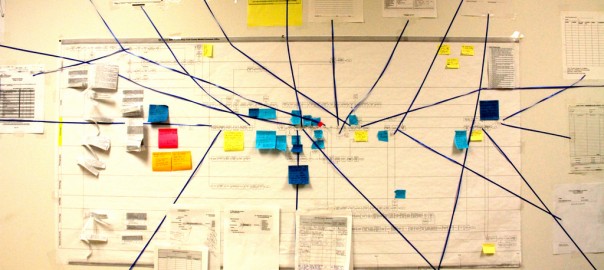
In order to help employees perform job functions correctly, it’s common to establish processes that outline workflows – a guide to who should be touching what part of the project and when – and procedural guides that detail what steps are required and in what order they should happen.
These are great resources. Employees benefit from reduced ambiguity in their jobs, and feel more comfortable and confident. Employers benefit from increased productivity and efficiency.
But by stopping there, you’re selling your organization and your employees short.
Don’t Mistake Process For Knowledge
There’s an important distinction to be made between process and knowledge. Process covers the “what,” while knowledge is the “how,” and just as we don’t expect process to reside solely inside the brains of our employees, the same applies to knowledge.
Instead of sharing knowledge, some organizations spend countless hours and resources dictating it through workflows and procedures. The theory is by breaking down complex procedures into a series of small steps, you reduce the errors that result from human errors and memory lapses.
No matter how good the process, how precise every individual step is, it can only do so much. It can’t account for gaps in knowledge, a mistaken or misplaced sense of knowledge, or evolving best practices that might require a steady stream of new knowledge.
Detailed Processes Can Stifle Creative Thinking And Problem-Solving
An employee can glean from a process checklist that step B follows step A, but what if they aren’t sure how to perform Step B? Some on-the-spot knowledge support can improve confidence and reduce errors while guiding employees toward the right solution.
Combining knowledge sharing with processes can also encourage critical thinking. Receiving instruction on how to perform a task leads to a deeper level of understanding, which can lend itself to finding even better ways to do things.
Employees shouldn’t be robots. They should feel confident to perform tasks at the expected level, but also supported in free thinking to keep the company moving forward.
Integrating “To Do” With “How To”
Process and knowledge should work in concert with one another. Imagine an environment where knowledge is easily accessible and can be easily linked to work processes: an unfamiliar step in a process made simple by a quick download of a job aid or a short video.
To get started, you’ll need to:
- Provide a means to collect your knowledge into an easy-to-use, team-sourced knowledge base. The knowledge base function needs to encourage team sharing: a social, collaborative network.
- Support a wide variety of media. This can’t just be about flash-based learning modules or PowerPoint presentations. Knowledge can be stored and processed in a variety of forms. Support them. Allow for the digital creation of checklists, job aids and other performance support materials—ideally supporting mobile devices as well as computer apps.
- Provide for the interactive linking of the process checklists or job aids with the knowledge base so that the process is instantly supported by the knowledge.
When paired correctly, knowledge and process is a winning combination that not only increases efficiency, but instills a feeling of empowerment in employees to continuously improve.
[Photo Credit: D.A.R.E. To Change, Process Flows, Office of the Cook County Medical Examiner]
(222)


